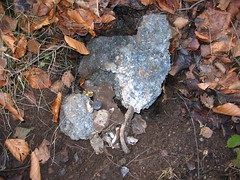Pat Cunningham (in the pic) offers the following information about the crash of two Sabres from No.66 Squadron, RAF Linton-on-Ouse, No. 12 Group, Fighter Command onto Kinder Scout and Black Ashop Moor on 22 July 1954 in which the formating pilots (Flying Officer James D. Horne, section leader (XD707) and Flight Lieutenant Alan Green, formating pilot (XD730)) were both killed.
When Russian-built swept-wing MiG-15 jet fighters were encountered in Korea in 1950, British manufacturers had nothing to match them. British transonic swept-wing fighters were under development to replace the straight-winged subsonic Meteors and Vampires, but until the Hunter arrived in 1955, Canadian-built Sabres filled the void. Held to be pleasant to fly, most of the Sabres were based in Germany, but No.66 Squadron was among those units equipped with them in Britain.
So it was that on 22 July 1954, four of the No.66 Squadron Sabres were recovering to Linton-on-Ouse, near York, after a high-level interception sortie flown in the course of a major annual-evaluation war-game. For the descent, the formation leader had split his section into pairs, each pair entering cloud independently at 12,000 feet.
Some time later, as his pair passed 5,000 feet, still in cloud, the overall leader transmitted an advisory warning to Flying Officer James Horne, now leading the second pair, against descending below 3,000 feet on their present heading: the more realistic safety height of the future was to be 3,800 feet.
The foursome had noted already that Flying Officer Horne’s radio was weak at times, so he may not have heard the warning; certainly, he did not acknowledge.
Indeed nothing more was heard of him, or of his number two, until three days later when a walker came upon a body on The Edge, high above Black Ashop Moor.
Until this discovery bad weather had hampered the search, although the keeper of the Kinder Reservoir had reported being alarmed by two jet fighters roaring at very low level towards cloud-covered Kinder. Despite his concern, however, he had heard no subsequent impact.
These aircraft had undoubtedly been the two Sabres, although what made Flying Officer Horne take his number two that low will never be known. A likely scenario, however, is that he saw a clearance below him, and dropped into what turned out to be a ‘sucker’s gap’ – a beckoning clearance which then closed in around him. Certainly, in his evidently hasty pull for a safe height, he managed to clear the edge of Kinder, but equally evidently something untoward happened after he had done so, for both aircraft struck the ground in a single impact point not many yards into the plateau.
To conjecture further, although Flight Lieutenant Alan Green, the number two, was more experienced than his leader, he was still settling in having been posted from another squadron. It could be then, that, caught out by the hastily initiated transition from level flight to very steep climb, he had – understandably – twitched just that little bit, causing his wingtip to lock with his leader’s tail. Or what is equally likely, bearing in mind that both aircraft were in very steep climbing attitudes, is that, in reaction to his leader’s over-hasty pull, Flight Lieutenant Green had pulled even harder, got high, and being momentarily unsighted from his leader, had collided in blindly pushing back into position.
The court of inquiry, however, did not treat with such speculation, finding only that Flying Officer Horne, as section leader, had failed to observe the area safety height – which he should have been familiar with regardless of any missed transmission – although it found some little mitigation in his faulty radio. It specifically noted that no blame was to be attached to Flight Lieutenant Green, whose sole responsibility had been to formate upon his leader.
Locations
SK 06926 89664 Kinder: initial impact point, start of debris trail (illustrated above)
SK 07268 90236 Black Ashop Moor: wings, gear, with an engine in an adjacent grough
SK 07300 90100 Black Ashop Moor, two debris pools
SK 07548 90390 Black Ashop Moor, the second engine
I note that there is a lot less here then in
my last pic. Theft and vandalism by sad anoraks as usual.
